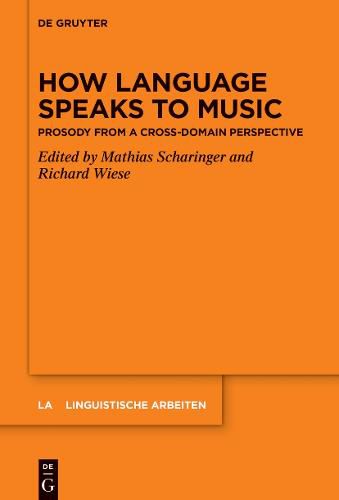Readings Newsletter
Become a Readings Member to make your shopping experience even easier.
Sign in or sign up for free!
You’re not far away from qualifying for FREE standard shipping within Australia
You’ve qualified for FREE standard shipping within Australia
The cart is loading…






This title is printed to order. This book may have been self-published. If so, we cannot guarantee the quality of the content. In the main most books will have gone through the editing process however some may not. We therefore suggest that you be aware of this before ordering this book. If in doubt check either the author or publisher’s details as we are unable to accept any returns unless they are faulty. Please contact us if you have any questions.
Prosody as a system of suprasegmental linguistic information such as rhythm and intonation is a prime candidate for looking at the relation between language and music in a principled way. This claim is based on several aspects:
First, prosody is concerned with acoustic correlates of language and music that are directly comparable with each other by their physical properties such as duration and pitch.
Second, prosodic accounts suggest a hierarchical organization of prosodic units that not only resembles a syntactic hierarchy, but is viewed as (part of) an interface to syntax.
Third, prosody provides a very promising ground for evolutionary accounts of language and music.
Fourth, bilateral transfer effects between language and music are best illustrated on the level of prosody.
Highlighting the first two aspects, this book shows that it is a fruitful endeavor to use prosody for a principled comparison of language and music. In its broader sense, prosody as sound structure of communicative systems may be considered a meta -language that formalizes the way of how music speaks to language and vice versa . Prosody is firmly established within linguistic theory, but is also applied in the musical domain. Therefore, prosody is not just a field of inquiry that shares elements or features between music and language, but can additionally provide a common conceptual ground.
$9.00 standard shipping within Australia
FREE standard shipping within Australia for orders over $100.00
Express & International shipping calculated at checkout
This title is printed to order. This book may have been self-published. If so, we cannot guarantee the quality of the content. In the main most books will have gone through the editing process however some may not. We therefore suggest that you be aware of this before ordering this book. If in doubt check either the author or publisher’s details as we are unable to accept any returns unless they are faulty. Please contact us if you have any questions.
Prosody as a system of suprasegmental linguistic information such as rhythm and intonation is a prime candidate for looking at the relation between language and music in a principled way. This claim is based on several aspects:
First, prosody is concerned with acoustic correlates of language and music that are directly comparable with each other by their physical properties such as duration and pitch.
Second, prosodic accounts suggest a hierarchical organization of prosodic units that not only resembles a syntactic hierarchy, but is viewed as (part of) an interface to syntax.
Third, prosody provides a very promising ground for evolutionary accounts of language and music.
Fourth, bilateral transfer effects between language and music are best illustrated on the level of prosody.
Highlighting the first two aspects, this book shows that it is a fruitful endeavor to use prosody for a principled comparison of language and music. In its broader sense, prosody as sound structure of communicative systems may be considered a meta -language that formalizes the way of how music speaks to language and vice versa . Prosody is firmly established within linguistic theory, but is also applied in the musical domain. Therefore, prosody is not just a field of inquiry that shares elements or features between music and language, but can additionally provide a common conceptual ground.